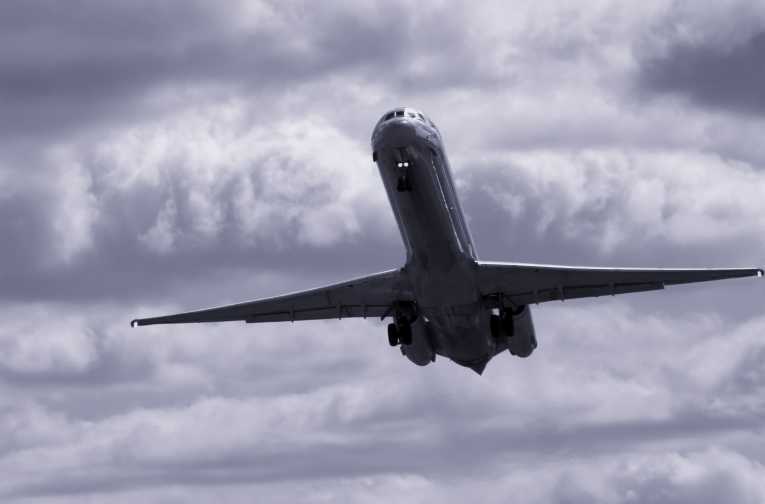Airplanes do more than just 'weather' the local conditions around airports - it seems that they help to create them too. A new paper in this week's Science has combined computer models and an analysis of satellite images around airfields, to show conclusively that when airplanes punch holes in low clouds, they are triggering extra snowfall as a result. It could mean extra work for the airport's de-icers, and may make weather data tracked near to airports a little off-the-mark, too.
It's already widely known that airplanes punch well above their weight when it comes to global warming - they emit considerable amounts of CO2, and help alter the atmospheric chemistry in the stratosphere, in ways that produce more greenhouse gas forcing. And a recent study has found that the stratospheric-ice clouds, formed from jet-plane con-trails, also influences global climate.
Now a team of meteorologists - led by members from the National Center for Atmospheric Research (NCAR) in Boulder, Colorado - has worked out the details of what is going on in these so-called 'hole-punch' clouds, often found near airports. They are commonly seen as streaky holes in sheet cloud, or long canals through them, and have been mistaken for UFOs on occasion.
But by looking at a slew of satellite photos over an airport in Texas, and its stored flight path data, the scientists were able to match the hole-punch clouds to individual planes. They found that planes large and small, can cause their formation, whether jets or propeller driven.
The team, led by Andrew Heymsfield from NCAR, was also able to develop a computer simulation that matched how the clouds evolved. The cloud-layers that a plane is traveling through holds water drops, that are supercooled - below zero degrees Celsius, but still liquid. It appears that the planes act to trigger these drops to seed ice crystals, by two different mechanisms.
Firstly, propeller tips traveling at speed produce a thrust behind the blades, that cools the air by up to 30 degrees Celsius. That causes the formation of tiny ice crystals, into which the supercooled water drops of the cloud gathers, in a process of nucleation. In cold weather, this can ultimately produce snow which falls to the ground.
Secondly, aircraft wings themselves can produce the same effect - especially for high speed jet planes - as the air above the wings has its pressure dramatically lowered. 'This also expands and cools the air above the wings by about 20 degrees Celsius,' Heymsfield explains, 'and due to this cooling, a stream of ice can be produced behind the wings.'
Both processes trigger a rolling process of cloud formation that spreads out around the airspace that planes fly through. Some can grow over 60 miles in length, over a space of a few hours. Whilst the authors don't believe this effect has significance for global climate, they almost certainly change the local weather.
The possibility of an extra sprinkling of snow exists especially for those airports at higher latitudes. And for climate researchers in the Arctic and Antarctic, they may find that they have to adjust their measurements to account for this effect - as the measuring equipment is usually located right next to the airfields where they are ferried in and out.










